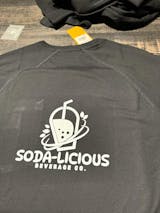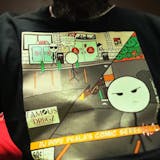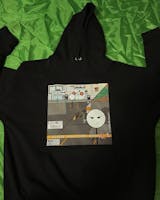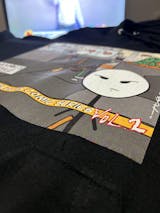Introduction: What’s the Deal with DTF Printing?
Direct-to-Film (DTF) printing is shaking up the customization world, making it easier than ever to create eye-catching designs on fabric. Unlike older methods like screen printing or direct-to-garment (DTG), DTF stands out for being flexible, easy to use, and affordable. It’s a great choice for businesses like dtfsheet.com, where you can upload your designs and turn them into custom heat transfer sheets in just a few clicks. In this article, we’ll break down what makes DTF printing unique, how it compares to other techniques, and how you can make the most of it for your next project.
What Exactly Is DTF Printing?
DTF printing is all about transferring designs onto fabric using a special film. Here’s how it works:
- A design is printed onto a transfer film with water-based inks.
- The film is coated with a hot-melt powder adhesive.
- It’s cured and then heat-pressed onto fabric.
The end result? A durable, colorful print that works on all kinds of materials—cotton, polyester, leather, and more.
Why Choose DTF Printing?
🛠️ Versatility
DTF can handle a variety of materials, from cotton to polyester to blends—even leather. So whatever fabric you’re working with, DTF’s got your back.
🎨 Vivid Colors
It uses CMYK and white inks to create vibrant, detailed designs that pop—whether you’re printing on light or dark fabrics.
⏱️ No Pre-Treatment Needed
Unlike DTG, which requires pre-treating fabrics (an extra step that eats up time), DTF skips this hassle entirely.
💪 Built to Last
DTF prints are tough. They resist cracking, fading, or peeling—even after lots of washes.
DTF vs. Other Printing Methods
Let’s see how DTF stacks up against other popular techniques:
| Feature | DTF Printing | Screen Printing | DTG Printing |
|---|---|---|---|
| Material Flexibility | Works on all kinds, including darks | Best for cotton, struggles with polyester | Great for cotton fabrics only |
| Setup Cost | Low | High | Medium |
| Color Range | Bright, supports gradients | Limited, needs layers | Photo-quality, but best on cotton |
| Durability | High | Very High | Medium |
| Speed (Small Runs) | Fast | Slow | Fast |
Tips for Home Users: Nail Your DTF Transfers
If you’re ordering DTF transfer sheets, here are some pro tips to help you get the best results:
- Start with a High-Quality Design: Make sure your file is high-res (like PNG or PSD) so your prints come out sharp.
- Follow Heat Press Instructions: Use the recommended settings—usually 310°F-325°F for 10-15 seconds.
- Wait to Peel: Let the transfer cool completely before peeling the film to avoid smudging.
- Store Smart: Keep your DTF sheets in a cool, dry place to protect the adhesive.
What’s Trending in DTF Printing?
🌱 Eco-Friendly Inks
DTF uses water-based inks, which are better for the environment compared to plastisol inks used in screen printing.
📈 Personalization Boom
Custom designs are in demand like never before. Businesses like dtfsheet.com make it easy to create unique designs without expensive equipment.
🧪 Better Adhesives
New advances in adhesive technology are making DTF prints even more durable and stretchy—perfect for activewear and more.
Quick Summary: DTF vs. Other Methods
- DTF Printing: Great for versatility, vibrant colors, and small business needs.
- Screen Printing: Best for bulk orders with simpler designs.
- DTG Printing: Awesome for photo-realistic prints but mostly limited to cotton fabrics.
Why DTF Printing Could Be Your Next Go-To
DTF printing has changed the game for anyone wanting to personalize apparel or textiles. It’s affordable, straightforward, and works on just about any material—no fancy equipment required. Whether you’re a DIY enthusiast or running a small business, DTF makes it easy to bring your creative ideas to life. Curious to try it? Check out dtfsheet.com and see how simple it is to get started.









